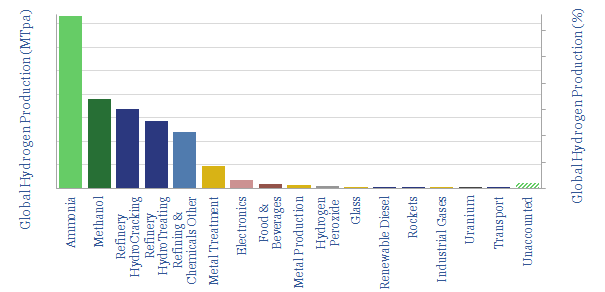
…CO2 per ton of hydrogen), pyrolysis, renewable electrolysis, fuel cell electrolysis, solar photoelectrocatalysis and solar photocatalysis. Our conclusion is that natural gas remains the most viable fuel source on a…
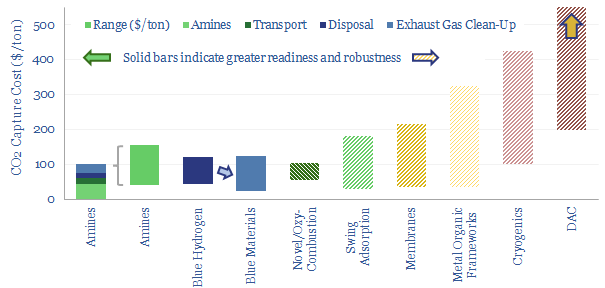
…concepts ranging from chemical looping combustion to molten carbonate fuel cells and solid oxide fuel cells. Transporting CO2 usually costs $4/ton/100km in a pipeline (model here). But CO2 is a…
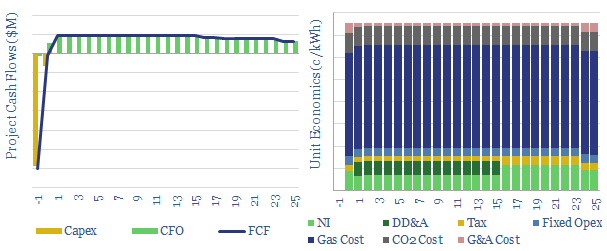
…Turbo-charged gas turbines could be among the non-obvious technologies to gain greater share as grids become more saturated with renewables, in addition to CHPs, PCMs and fuel cells, per our…
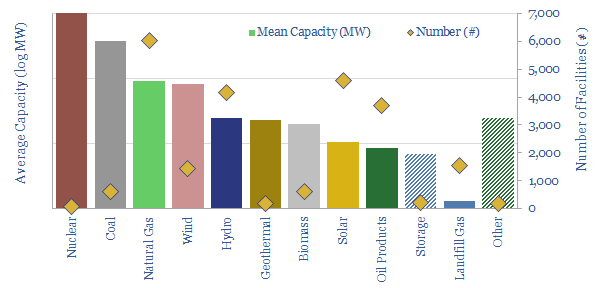
…at the highest voltage, for ultra-long distance transmission. Smaller generation sources. We have recently written about opportunities in landfill gas, fuel cells, geothermal, and biomass power. But per the charts above,…
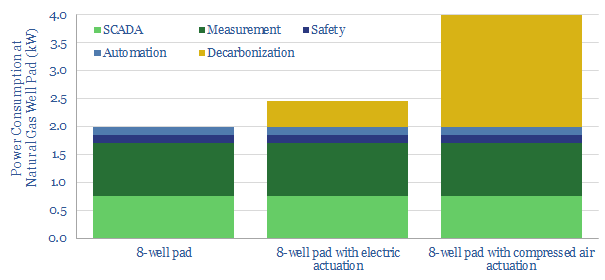
…cells, and c$380k for a thermo-electric alternative. Emissions reductions from each Qnergy Powergen unit saves 325T of CO2e-emissions per annum, while powering each unit will emit 25T of CO2e, for…
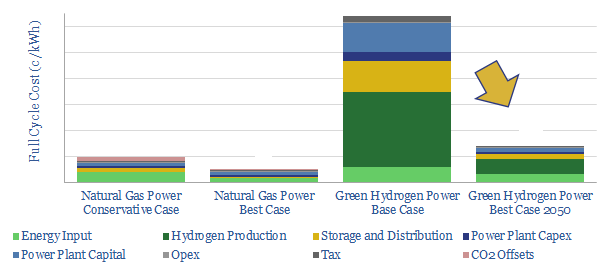
This 16-page note models the green hydrogen value chain: harnessing renewable energy, electrolysing water, storing the hydrogen, then generating usable power in a fuel cell. Today’s end costs are very…
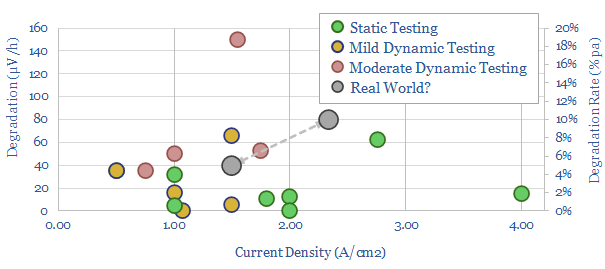
…volatile input feeds, including case studies from the motor industry, are reviewed on (page 5). A brief history of electrolyser and PEM fuel cell deployments are reviewed, in order to…
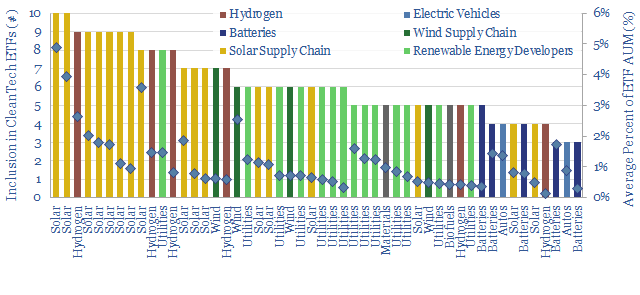
…fuel cell companies. 5 are companies in the battery supply chain. 4 are wind companies. 2 are EV producers. Energy transition stocks tend to be younger, smaller and more highly…
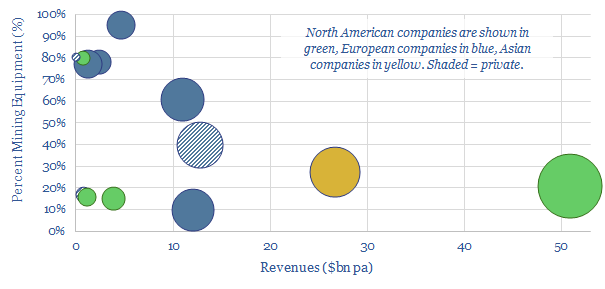
…mining equipment manufacturers in the world has noted challenges with hydrogen fuel cells, which is that they may not operate brilliantly in the extremely dusty and high-vibration mining applications. Supporting…

…world-changer, if efficiency improves from 2-10% today to 15-20% in future, or better (and with an interesting read-across for fuel cells). And could semis also underpin electrochemical DAC? The supply…










